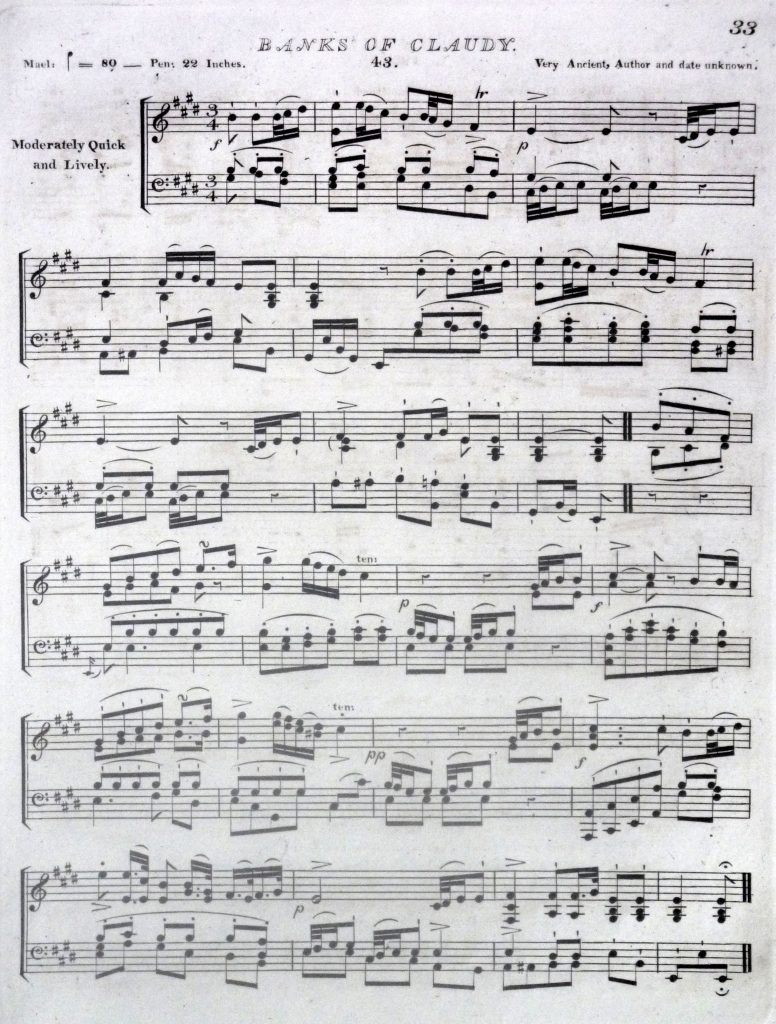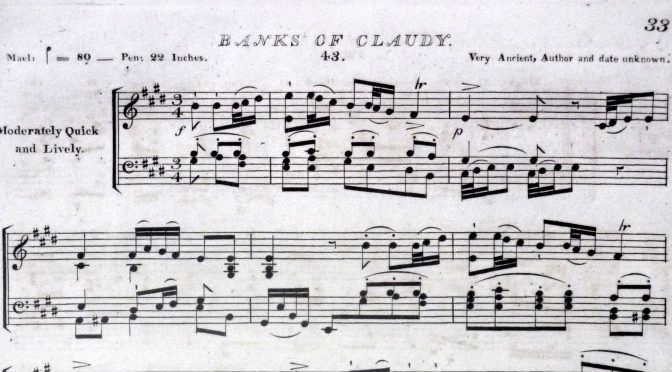Edward Bunting‘s first field notebook, which he used to take down live transcriptions from the old harpers in 1792 and later, is kept at Queens University Belfast, Special Collections, MS4/29.
Usually known as ms29, it is a small oblong notebook stuffed full of sketchy drafts and scribbled transcriptions from the playing of the last tradition bearers.
On page 1 of the book is a two-staff arrangement of “The Banks of Claudy”.
I first tried playing through the arrangement of Banks of Claudy 12 years ago, when I first got hold of facsimiles of ms29. That was before I had a big 18th century Irish harp. I played it with long fingernails on my old, rough, Queen Mary copy. I thought it sounded very “pianistic” and dismissed it as a possible early notation.
Now I am working on the style and idiom of the 18th century Irish harpers playing with the tips of their fingers, I thought I should look again at this. My thinking that triad chords might have been a common feature of 18th century Irish harp style led me to wonder if I should re-asses this judgement.
So, here is a rough attempt at The Banks of Claudy from the ms29 setting.
https://www.youtube.com/watch?v=7hthQ8A9bDQ
Bunting printed a piano arrangement in his 1840 book, clearly based on the ms29 draft:

This gives a complete version, whereas the ms29 is fragmentary, missing its end.
The introduction and index of the 1840 book give more details:


Hugh Higgins certainly played with the tips of his fingers. I find his triad chords sound rather convincing.
Alasdair Codona suggests that we’re missing the previous page, which would have contained the much more sketchy first draft notation of the tune. We can see this elsewhere in ms29, for example the notation for Burns March, where the left page has just the dots, and the right page has a tidied up version.
Still, what a treat to discover how well this works for fingertip playing!
